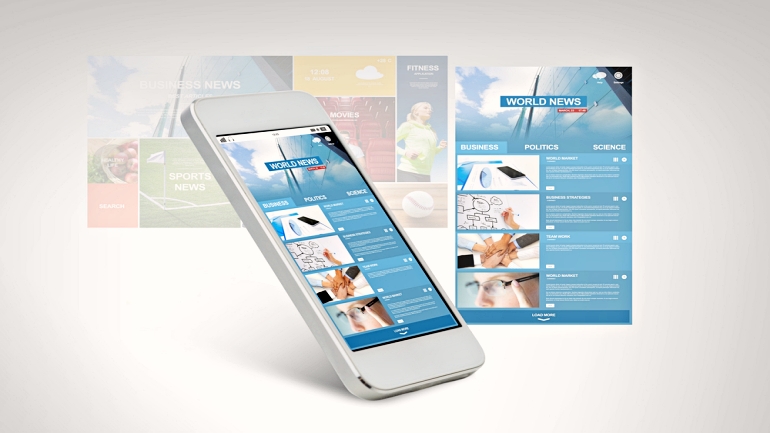The non-profit industry group i3forum, which focuses on transformation in the network carrier business, has announced the addition of three new members – Clear, Digicel and Lanck Telecom. Clear specializes in blockchain-based settlement and clearing networks, Digicel provides total communications and home entertainment services in 33 markets across the Caribbean, Central America and the Asia Pacific regions, and Lanck Telecom offers voice and data transfer services to carriers and retail operators in more than 190 countries worldwide. “New members bring new perspectives and insight to our discussions, workgroups and initiatives. We are excited to have Clear, Digicel and Lanck Telecom join us and share their expertise across a variety of topics. Unique voices and opinions support our vision for open and inclusive collaboration,” said Philippe Millet, Chairman at i3forum. “It is a very exciting time for i3forum as we get new initiatives off the ground and take our organization to new places. I’d…
An independent news platform Telecoms.com has recently published its Annual Industry Survey 2019, with the main focus being on topics such as industry updates, 5G rollout, digital transformation, the Internet of Things (IoT), as well as the modernization of Operations Support Systems (OSS) and Business Support Systems (BSS). The survey, covering the industry landscape over the last 12 months and projecting into 2020, has revealed an optimistic forecast that is mainly supported by the launch of 5G commercial services, innovations and progress in other important areas of the industry. According to the report, the single biggest change in the industry landscape over the past year was the deployment of commercial 5G services in different parts of the world. Regardless of the fact that the best-selling service is high-speed Internet access (mobile and fixed), B2B services, including 5G serving other vertical industries, will undoubtedly play a much more significant role…
Apple now owns Intel’s mobile modem business Intel, a leader in the semiconductor industry, has completed the sale of the majority of its smartphone modem business to Apple. The company said this transaction enables it to focus on developing 5G network technology while maintaining the ability to create modems for non-smartphone applications, such as PCs, Internet of Things (IoT) devices and autonomous vehicles. Apple now uses Qualcomm for 4G LTE and 5G modems for iPhones. With this acquisition, Apple is planning to develop its own modems for smartphones in 2021. Read more at: https://tinyurl.com/rqmu724 Orange unveils new five-year grand plan Orange, a French multinational telecommunications corporation, has introduced “Engage 2025”, its new strategy that follows on from the Essentials 2020 plan launched in 2015. The corporation has revealed its goals for the coming years, emphasizing that its business model will be guided by social and environmental responsibility. Considering the operator’s business…
Ericsson, one of the world’s leading providers of technology and services to telecom operators, has completed the first transglobal 5G data call over live commercial 5G networks, showcasing its Spectrum Sharing technology. Through their collaboration with 5G ecosystem industry leaders Qualcomm Technologies, Swisscom and Telstra, and using a 5G smartphone from Chinese manufacturer OPPO, Ericsson continues to demonstrate its drive towards commercial dynamic spectrum sharing. The Swedish tech giant said that the November 29 data call connected Bern, Switzerland and the Gold Coast, Australia using Ericsson Spectrum Sharing deployed on Swisscom’s and Telstra’s commercial 5G networks at the respective sites. The call was achieved using spectrum sharing on a 3GPP Frequency Division Duplex (FDD) band and pre-commercial OPPO 5G handsets employing the Qualcomm Snapdragon X55 5G Modem-RF System. Moreover, OPPO is the first 5G device manufacturer to implement Ericsson Spectrum Sharing in its smartphones. As part of the…
Telefonica launches Tech and Infra units amid Latam spin-off Spain’s telecom giant Telefonica has announced a major organisational restructuring after a meeting of its board of directors. The company’s chairman and CEO Jose Maria Alvarez-Pallete has introduced a new bold strategy to spin off company assets and prepare for industry 4.0. With its 5-point plan, Telefonica aims to generate more than EUR 2 billion a year in additional revenues from 2022, by prioritising its four key markets of Spain, Brazil, the UK and Germany and carrying out an “operational spin-off” of its Latin American business. The company will also set up a subsidiary for its cloud, cybersecurity and IoT businesses called Telefonica Tech and another for its infrastructure assets, Telefonica Infra. Read more at: https://tinyurl.com/wjkobwc AT&T and Microsoft launch edge computing network Microsoft and AT&T have integrated 5G with Azure to launch their new Network Edge Compute (NEC) service for…
French operator Bouygues Telecom and US-based TeleSign Corporation, a provider of user verification and Communications Platform as a Service (CPaaS) solutions owned by BICS (Belgacom International Carrier Services), have agreed on a new partnership. Under the agreement, Bouygues Telecom will gain access to TeleSign’s mobile identity products to protect its users from online identity theft and fraud activities such as Account Takeover (ATO) through SIM Swap and Synthetic Identity fraud. In the press release announcing the deal, Ravish Patel, Director of Mobile Identity at TeleSign, claimed that Mobile Identity represents a massive opportunity for mobile operators to play an important role in today’s digital disruption. “TeleSign has been working with mobile operators, guiding them on key aspects around the opportunity, use cases and privacy principles,” commented Patel. The announcement also points to breakthrough innovations in the European digital market in recent years, as more and more digital businesses…
Gamma Communications, a rapidly growing provider of communications services to the UK business market, has announced its acquisition of Telsis Communication Services, a UK-based developer of unified communications-as-a-Service (UCaaS) products for small to medium-size enterprises (SMEs). Gamma anticipates that this acquisition will bring the right combination of specialist development skills and engineering expertise, thus helping the company to achieve its strategic goal of becoming a leading UCaaS campaigner. Andrew Taylor, Chief Executive of Gamma, said, “We’re really pleased to announce the acquisition of Telsis. The development skills they have are core to Gamma’s UCaaS strategy and we plan to enhance our existing engineering teams to provide more resource to accelerate our existing roadmap. We look forward to working alongside the Telsis team as we continue to grow Gamma and capitalise on the opportunities ahead.” The transaction, the value of which is estimated between GBP 2 to 3 billion, follows…
Peerless Network, Ribbon Team Up to Help Businesses Mitigate Unwanted Robocalls Ribbon Communications, a global software leader in secure IP-based real-time communications, and Peerless Network have joined forces to provide businesses with advanced protection against unwanted robocalling. Peerless Network, which provides telecommunication services and high-quality voice solutions for enterprise customers worldwide, will leverage Ribbon’s advanced security technology to power its new offering designed to combat robocalling. Peerless CallTrue gives its customers more options to deal with those nuisance calls. Read more at: https://tinyurl.com/rzwk7dy Vodafone picks Google Cloud to develop and host its global data platform Vodafone Group, one of the world’s leading telecom and technology services companies, has come into partnership with Google Cloud to host its strategic cloud platform for data analytics, business intelligence and machine learning. According to the announcement, Vodafone’s Neuron big-data analytics platform will leverage Google Cloud to enhance its operations by making Vodafone’s existing software…
CounterPath Corporation, a Canadian software company that delivers Unified Communications (UC) solutions to businesses and service providers, has announced its membership in the Cloud Communications Alliance (CCA). As a peer organization that has a mandate to foster the expansion, availability and adoption of hosted communications services worldwide, the CCA provides a forum for industry leaders to discuss the most relevant topics. Todd Carothers, Chief Revenue Officer at CounterPath, said, “The CCA comprises some of the world’s leading cloud communications experts, vendors and strategists, and CounterPath is thrilled to be joining this fast-growing community. When extending the offer of membership into the organization, the CCA cited CounterPath’s long-term leadership in cloud communications as well as the ongoing technical innovations we have introduced to the market, including our award-winning Bria and Stretto solutions. We look forward to working with the CCA’s leadership team and members to advance the state of the cloud communications…
FIX Network has announced a significant achievement towards their goal of securing transactions and private keys on SIM cards. As an innovative joint venture made of leading teams in telecoms, cybersecurity and blockchain, FIX Network will leverage the existing cellular infrastructure by defining and implementing a new blockchain-based security protocol. According to the announcement, the FIX Network Security Protocol will ensure the security and safety of private keys used by applications on mobile devices, and will provide a trusted environment for protecting a customer’s digital identities and digital assets. A significant innovation by the company is the storage of private keys on the subscriber’s SIM card, and the execution of cryptographic operations on that SIM card using applets. FIX Network emphasized that the private keys are never exposed to the mobile device or to a public network, thus enhancing security of the stored Digital Identities and other digital assets such…













